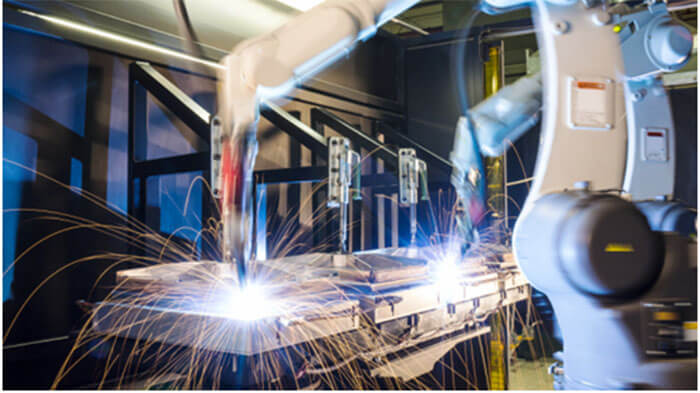The convergence of AI and IoT is accelerating to become AIoT
Technology trends in artificial intelligence (AI) and the Internet of Things (IoT) have begun to converge, a trend the industry has named the Artificial Intelligence Internet of Things (AIoT). Artificial intelligence is moving from the cloud to the edge, providing solutions to the bandwidth and security issues that have prevented the wider adoption of IoT in key markets. If the history of technology development is a reliable guide to the future, there are at least two more phases of this convergence to take place in the next few years.
The Internet of Things has attracted a great deal of interest recently, but for many applications, two important issues have emerged. One is security; the data flowing over the network from IoT devices and the control of the devices themselves rely heavily on adequate cyber-attack security.
As threats continue to evolve and become more intense, security requires constant vigilance and mitigation on the part of IoT developers. At the same time, many potential users are delaying the use of IoT technologies due to uncertainty about the security of their systems and data.
A second issue limiting IoT adoption is the bandwidth required to send data to the cloud for processing.
As the number of installed devices increases and the amount of data involved grows, IoT deployments are being constrained by the bandwidth resources and costs involved in data collection.
This becomes even more of a concern as artificial intelligence becomes an increasingly important element in extracting value from all data.
The importance of artificial intelligence in data processing has grown dramatically as traditional data processing techniques become increasingly cumbersome.
Developing and coding effective algorithms for extracting useful information from large amounts of data takes time and application expertise that many potential users lack.
It can also lead to fragile software that is difficult to maintain and modify as requirements change. Artificial intelligence, particularly machine learning (ML), allows processors to develop their own algorithms based on training to achieve desired results, rather than relying on expert analysis and software development. In addition, with additional training, AI algorithms can be easily adapted to new requirements.
The latest trend in artificial intelligence moving to the edge is to combine these two technologies. Extracting information from IoT data currently occurs primarily in the cloud, but bandwidth and security concerns are less important when most or all of the information can be extracted locally.
With artificial intelligence running in IoT devices, there is little need to send large amounts of raw data over the network; only concise conclusions need to be communicated. With less communication traffic, network security is easier to enhance and maintain.
Local AI can even help improve device security by checking incoming traffic for signs of tampering.
Predictive maintenance of industrial machinery is one application where the convergence of AI and IoT will continue to evolve.
AIoT seems to follow a development path similar to the way microprocessors evolved in the 1980s. Processing started with separate devices that handled different tasks: general-purpose processors, memories, serial interface peripherals, parallel interface peripherals, etc.
These eventually integrated device tasks into a single-chip microcontroller, which then evolved into application-specific dedicated microcontrollers. AIoT appears to follow the same path.
Currently, AIoT designs use processors complemented by generic AI acceleration and AI middleware. Processors with AI acceleration are also starting to debut. If history were to repeat itself, the next phase of AIoT would be the evolution of AI-enhanced processors tailored to specific applications.
In order for a custom device to be economically viable, it needs to meet the common needs of a range of subject-related applications. Such applications are already starting to become visible.
One such theme is predictive maintenance.
Artificial intelligence combined with IoT sensors on industrial machinery is helping users identify abnormal patterns in vibration and current consumption that are precursors to equipment failure.
The benefits of placing AI locally on sensor devices include reduced data bandwidth and latency, as well as the ability to isolate device responses from their network connections. Dedicated predictive maintenance AIoT devices will serve a huge market.
The second theme is voice control.
The popularity of voice assistants such as Siri and Alexa is driving consumer demand for voice control capabilities in a variety of devices. Dedicated voice-controlled AIoT devices will help address bandwidth and latency issues, and help ensure functionality during periods of spotty connectivity. The number of potential uses for such devices today is staggering.
There are other potential topics for dedicated AIoT devices that need to be addressed. Environmental sensing for industrial safety and building management is one of them. Chemical process control is another. Self-driving car systems are a third. A fourth is cameras that identify specific targets. No doubt more will emerge.
Artificial intelligence technology appears to be here to stay, and the next step in development – as with processing technology – will be the development of specialized devices for key markets.
Beyond that, the industry is most likely to develop configurable AI gas pedals that can be customized to their applications, so that the benefits of AIoT can effectively reach more and smaller markets.
There are still many technical challenges to overcome. Device size and power consumption have always been edge issues, and AI needs to do more to address these issues. Development tools can do more to simplify application development efforts when using AI.
Developers need to learn more about AI as an alternative approach to application development. But if history is any guide, these challenges will soon be overcome.
Besides The Convergence of AI and IoT Becomes AIoT article, You may also be interested in the below articles.
What Is The Core 5G NR Technology?




